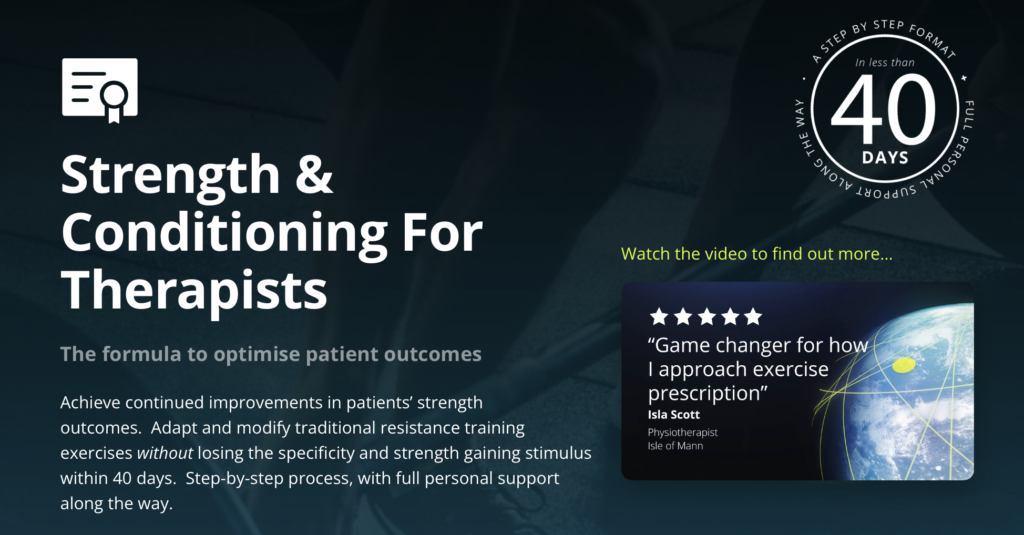Have you ever used EMG? Do you know what it is? Maybe you’re looking to improve your EMG signal quality? I’m frequently asked about EMG, despite it being one of the lesser-used techniques in rehab, and I love this as it’s a passion of mine. So let me take you through this first post on EMG: What is muscle EMG and how to use it.
What is EMG?
Okay, so I’m pretty confident that you’ll have heard of EMG, but are you confident that you know what it is, how it’s measured and what we can understand from the signal? Let’s get into it.
In it’s simplest format, electromyography (EMG) is like a voltmeter that detects the polarity or voltage changes that occur across the muscle fibre membrane (depolarisations, repolarisations, hyperpolarisations). These depolarisations are necessary for the muscle to become active and produce force.
You may recall that these polarity changes are to do with the relative ratio of intracellular and extracellular sodium and potassium ions? No matter if you don’t remember, just understand that the changes in polarity ie the EMG, provide information about the contractile status of the muscle.
The most basic application of muscle EMG (presuming appropriate methodologies are adhered to) is determining if a muscle is ‘on’ or ‘off’. But that’s not all we can glean from muscle EMG. We can interrogate the EMG signal for example, for volume/amount of signal, amplitude of signal, frequency of signal and latency of signal relative to force production or other external events, like movement. This information can be useful to help us answer questions in research and clinical settings.
With precise equipment, sensors and skin preparation techniques we can detect voltage changes, or muscle EMG, in the associated muscle subsequent to, for example, an externally-applied stimulation at the nerve. This generates a single depolarisation depolarisation & hyperpolarisation called an M-wave and a muscle twitch response. Or, or during maximal voluntary contraction (MVC), which generates a sustained interference pattern – see figures below.
Minshull et al (2007). Eur J Appl Physio 100:469–478 [Full text]
How is EMG Recorded?
The most commonly used technique is surface EMG or sEMG. Sensors, or electrodes are placed approximately over the belly of the investigated muscle in a bi-polar configuration on (see SENIAM guidelines for exact placement for different muscles) along the line of the muscle fibres’ direction (See figure below for EMG capture of vastus lateralis). The difference between the signals of the two electrodes represents sum of the action potential travelling along the fibres i.e. the muscle electrical activity. A reference electrode is usually placed on a bony landmark, or laterally as a comparator, where there is no electrical activity.
You may be familiar with surface electrodes if you’ve eve used bioimpedance, or if you’ve ever use an electrical stimulation device. Although the latter involved delivery of stimulus, not recording of it.
Every heard of needle electrodes or array? These are less routinely used, you’ll see why. Indwelling needle electrodes are, as the name suggests, inserted into the muscle. This application is often used to detect more subtle localised muscle fibre activity and in in vitro preparations. Clearly quite invasive and not really appropriate for assessing dynamic activity either! Array electrodes are like a sheath of multiple electrodes over a muscle to capture more a more global pattern of muscle activity. This is very specialist.
What is EMG Used For?
Okay, so let’s assume we’ve nailed the quality recording of EMG (see below), what can we do with the signal?
Here are just a few applications of muscle EMG:
- Assessing contribution of a muscle to a particular action/movement
- Estimation of relative contribution of different muscles to a particular action
- Biofeedback; as a rehab/training guide
- Evaluation of muscular fatigue (EMG actually increases as fatigue occurs during sustained sub-max contractions!)
- Frequency analysis of EMG to assess fast and slow motor unit activity
- Timing of onset and relaxation relative to force (Electromechanical delay (EMD), relaxation EMD))
- Nerve conduction assessment
Problems With Using EMG?
Unfortunately, if you want accurate data it’s not as simple as slap on the electrodes and click go. The stability and accuracy of the EMG signal can be influenced substantively by a number of things, and of course this influences its utility.
Basic things like good skin preparation (to remove oils and dead skin cells), proper placement and fixation of electrodes influences of the quality of the incoming data, then sampling frequency (how many times per second (Hz) times per second) signal filtering and processing will influence the quality of what you see out the other side.
Sampling Frequency?
As a very brief guide, and assuming your methods are top notch, the sampling frequency should be at least 1000Hz, that’s 1000 samples of data per second. Why so high? Geek alert(!), it’s to do with the Nyquist frequency. So if we were to interrogate the (raw, unfiltered, quality) EMG signal from a maximal voluntary contraction, we may find frequencies of up to 500Hz. The Nyquist rate dictates that we need to sample at a frequency at least twice as fast as the top signal frequency to avoid aliasing (sorry, another complex term,) – basically, it’s preserve the quality and precision of the signal. So the recording or Nyquist frequency is 500Hz x 2 = 1000Hz. You may find papers (including ours) that sample even higher.
So what we’re interested in here is reducing the infiltration of noise into our EMG signal (optimising the signal-to-noise ratio). What’s noise? It’s anything that isn’t EMG. Noise can come from many sources, which is why it’s important to become competent and practiced at EMG techniques if you need high-quality data.
Sources of Noise
The electrodes that we place on the skin usually have a central area containing the sensor that is coated in conductive gel. Any disruption to the gel-sensor interface causes error.
- Skin preparation: Removing hair, skin oils and dead skin cells
- Electrode placement: ~muscle belly, along the line of the muscle fibres, recording electrodes ~3cm apart
- Electrode fixation: any movement of electrodes will distort the signals are the safely stuck to the skin, are they free of interference?
- Motion artefact: (and related to above) if you’re using wired electrodes, movement of wires can distort the signal, have the wires taped. Telemetrised EMG systems can also have wires, but are usually more easily contained (see Noraxon picture)
Want to dig deeper? Here’s a great paper [link] that discusses EMG techniques, data, signal acquisition and processing a whole lot more.
Signal Sampling: Biofeedback or Research?
Right, what are you using the EMG for? If it’s for research or clinical diagnostics for example you will need a high quality system, fast sampling frequency and processing to maximise signal fidelity. IF it’s to guide exercise and provide some feedback, then less so. When you compare the the prices of biofeedback modules with quality EMG systems, you’ll see price differences of £1000s, and now that you’ve read a little about EMG, I’m sure you can see why (And I haven’t even talked about signal amplification and filtering or data interrogation yet!).
You can pick up an EMG biofeedback deceive for a few hundred pounds or dollars and they generally look okay, but when you dig a little deeper it’s difficult to find out the technical specifications, like the sampling frequency.
Summary
Firstly, surface EMG can offer important insights into muscle performance, which can be particularly useful during periods of injury, rehabilitation, fatigue etc. However, if we’re placing any confidence on these data in being true and accurate, we have to adhere to some robust protocols and use systems that are capable of acquiring high quality data.
If you’re using EMG purely as feedback, I’d still make sure to try and maximise the signal-to-noise ratio using basic techniques including skin preparation ,for example, but I wouldn’t worry too much about the technical specs of the device. Bottom line, you’ll get what you pay for, and you can always ask the questions of the manufacturer!
As always, thanks for reading.
Enrolment opening 28th February Click below for info








